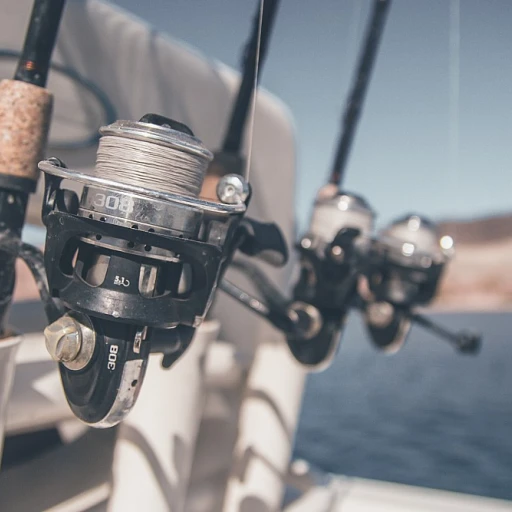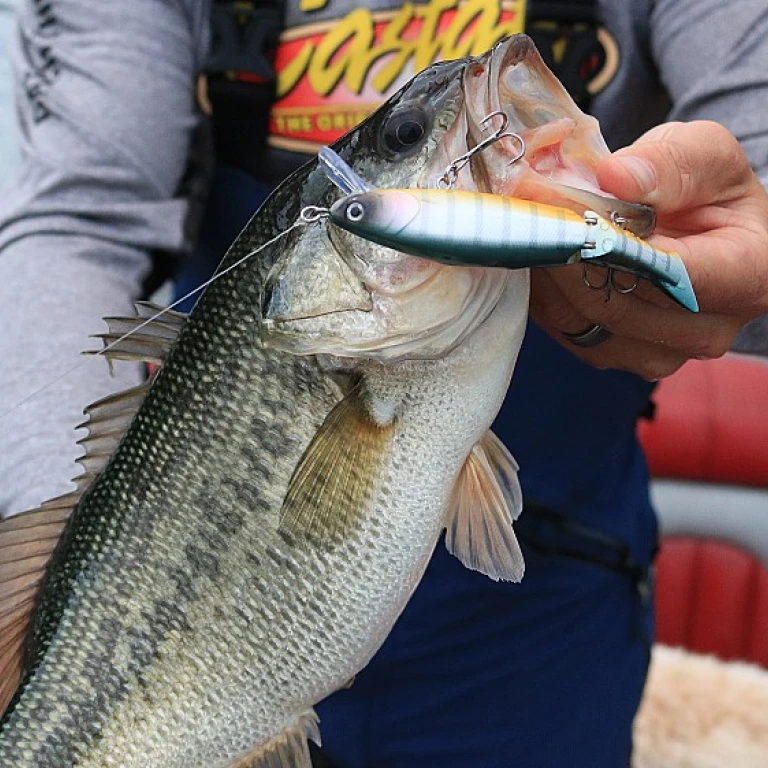Understanding Lake Hartwell's Ecosystem
Delving into Lake Hartwell's Ecosystem
Situated on the border of Georgia and South Carolina, Lake Hartwell is a prominent spot for enthusiastic anglers and houseboat lovers. This man-made marvel covers around 56,000 acres, characterized by its stimulating topography and diverse aquatic life, making it a prime locale for recreational fishing. The interplay of tributaries feeding into the lake creates a vibrant ecosystem where numerous fish species thrive.
Fishing reports often highlight the dominance of popular catches like black bass, striped bass, and channel catfish, each bringing unique challenges and rewards to fishermen. With water temperatures fluctuating, these species exhibit distinct seasonal patterns, influencing fishing strategies considerably.
Water levels are crucial in determining the success of fishing in Lake Hartwell. Anglers usually find success in both shallow and deeper sections, with bass fishing being particularly good in full pool conditions. Crappie and hybrid striped bass also abound, drawing in fishing charters aiming for a good catch.
Jigs and minnows are common tactics used here, ideally suited for the varied terrains of Lake Hartwell. However, one must pay close attention to the lake's water temperatures and current fishing reports for optimal results. For those intrigued by the broader context of lake ecosystems,
this guide can offer insightful information.
Understanding the intricacies of Lake Hartwell's ecosystem not only bolsters one's ability to catch fish but also enhances appreciation for the delicate balance of nature that supports such vibrant activity.
Crappie Fishing Techniques and Tips
Perfecting Your Crappie Fishing Technique
Lake Hartwell, a prominent gem nestled at the heart of the southeastern United States, boasts a vibrant ecosystem that makes it an enticing destination for fishing enthusiasts. Crappie fishing in this lake demands a keen understanding of the water's temperament and the habits of fish lurking below the surface.
One of the most effective techniques when fishing for crappie is using jigs. Many anglers find that the key to enticing these fish lies not just in the type of jig used, but also in the presentation.
Reports suggest that crappie are particularly responsive in shallower waters during the initial phases of spring when water temperatures begin to rise. At this time, positioning your bait in approximately 8 to 12 feet of water can significantly increase your catch rate.
It's crucial to adapt your approach based on seasonal water levels and the movement of fish. Hartwell fishing strategies often emphasize relocating to deeper waters as summer approaches. Here, the full pool and nearby structures come into play, with crappie seeking shelter around submerged trees and brush piles.
In addition to jigs, using live bait such as minnows can be highly effective. The subtle movement of minnows across the lakebed mimics natural prey, attracting sizable fish looking to bite. Reports from experienced fishing charters and guides often highlight the effectiveness of blending these two approaches to enhance success.
Of course, each season presents a different set of challenges and opportunities, demanding flexibility and adaptation in your techniques. For those wondering "do bass bite at night," during warmer months both crappie and bass become more active as the sun sets. This knowledge can be an invaluable asset for any angler looking to maximize their time on the water.
In conclusion, mastering crappie fishing techniques requires a blend of strategy, timing, and understanding of Lake Hartwell's ecosystem. Staying informed with local fishing reports and collaborating with seasoned captains can provide invaluable insights to ensure your fishing experience is as successful as it is enjoyable. There's an undeniable thrill in this pursuit, rooted deeply in both skill and luck, that makes the challenge worthwhile for any fishing aficionado.
Essential Fishing Gear for Lake Hartwell
Equipping Yourself for Success on Lake Hartwell
When setting out to conquer the serene waters of Lake Hartwell, especially those shallow regions where the crappie bite is often best, choosing the right gear can make all the difference between a full catch and a day of missed opportunities.
Begin by considering your choice of jig. Given the varied water depths, ranging from shallow feet to deeper areas, versatility is key. Opt for a selection of jigs that can be adapted to different water levels, whether you’re targeting the more elusive crappie or have your sights set on the resilient largemouth bass.
A reliable fishing rod should offer both sensitivity and strength. This balance is crucial when tackling anything from channel catfish by the banks to the more adventurous bass fishing excursions across the lake. As fishing reports regularly emphasize, water temperatures and the fluctuation of the lake’s full pool can influence fish will and activity, making the adaptability of your equipment even more essential.
The guide reports often highlight the importance of having a good selection of live bait such as minnows, a time-tested favorite for crappie and often effective for encouraging a striped bass bite too. Local fishing charters and seasoned captains advise having a mix of live and artificial options to enhance your fishing good outcome.
Additionally, the evolving innovations in recreational fishing products are continuously improving how successful your day on the water can be. Whether it's upgrading to a modern tackle box that organizes your gear more efficiently or a high-quality pair of polarized sunglasses that reduce water glare, these enhancements contribute significantly to your overall experience.
Moreover, for those who regularly frequent the main lake in search of hybrid striped bass or the feisty spotted bass, investing in a reliable boat storage solution will provide longevity to your equipment and convenience during your lake excursions. By maintaining organizational and protective measures, you'll ensure your gear is always in top condition when the next fishing opportunity arises. More on these solutions can be found
here.
Ultimately, preparing for the challenges of Lake Hartwell’s fishing landscape requires attentiveness to both the unique characteristics of the lake and the latest gear innovations. This ensures that whether you're working with shallow jigs or seeking the deeper water challenges, your equipment really will make the difference.
Challenges Faced by Recreational Fishermen
Overcoming the Hurdles in Lake Hartwell Fishing
Lake Hartwell, with its sprawling waters, offers anglers a robust opportunity for thrilling fishing experiences. However, recreational fishermen often encounter specific challenges that can make catching fish here somewhat elusive. Understanding these challenges can enhance the fishing experience and lead to more successful outings.
Firstly, the fluctuating water levels in Lake Hartwell can pose a significant challenge. When the lake is at full pool, the fish distribution changes, affecting fishing conditions. Reports indicate that lower water levels can make it difficult to target specific species like largemouth bass or channel catfish. Anglers need to adapt their strategies depending on whether the water is shallow or deeper.
The rapid change in water temperatures plays a crucial role as well. During colder months, crappie tend to seek deeper waters, making them less accessible to those fishing from the shore. Meanwhile, bass fishing can be unpredictable, with black bass often retreating to more sheltered spots away from the main lake areas.
Fishing reports frequently mention the unpredictability in bite patterns and fish will, making it imperative for recreational fishermen to frequently adjust their techniques. For instance, while fishing with jigs is a popular method at Lake Hartwell, reports suggest that at times, switching to live minnows can yield better results, especially when targeting crappie.
Moreover, adapting to seasonal changes and being aware of the presence of hybrid striped bass and spotted bass requires the insights of seasoned fishing charters or guides. These experts often provide valuable information that can help predict patterns and therefore optimize catch rates.
Despite these challenges, it’s noteworthy that even the channel catfish and catfish populations provide thrilling catches, albeit requiring a keen understanding of their habitat and feeding habits. Overall, staying informed through reliable fishing reports, employing diverse techniques, and adapting to the lake's dynamic conditions can significantly enhance one's fishing endeavors at Lake Hartwell.
Innovations in Recreational Fishing Products
Innovative Gear Transforming Crappie Fishing at Lake Hartwell
Innovation plays a crucial role in elevating the fishing experience at Lake Hartwell, particularly when targeting crappie. The constant evolution of fishing products ensures that anglers can adapt and succeed despite the challenges posed by changing water levels and temperatures.
One of the key developments in recent years is the advancement of fish finders, which utilize sonar technology to identify schools of crappie in deeper waters as well as in more shallow areas. These devices offer detailed reports that guide fishermen in identifying optimal fishing spots, regardless of whether it's near the main lake or hidden pockets.
Jigs and lures specifically designed for crappie are also evolving, with new designs mimicking local baitfish more closely, such as minnows often preyed upon by crappie and other species like bass and catfish. As the bite patterns shift, having a comprehensive tackle box filled with a range of jig colors and weights can make a significant difference. Techniques like vertical jigging in deeper feet of water, where fish will school near structures, have proven effective as well.
Fishing charters at Lake Hartwell provide invaluable insights into local fishery conditions, from water temperatures to the behavior of species like striped bass and largemouth bass. These guided trips are not only about catching fish but also about experiencing the lake's ecosystem fully, often employing the latest gear as part of their service.
Reports indicate that the use of hybrid striped bass and black bass-specific gear has seen an uptick, optimizing the chance to catch fish even when the crappie bite isn't strong. The introduction of lightweight, durable rods specifically designed for crappie and smaller species further improves anglers' precision and effectiveness.
As recreational fishermen continue to face environmental challenges, keeping abreast of gear innovations and leveraging these products is essential for maintaining successful outings, especially amidst changing conditions that can affect fishing reports and techniques across Lake Hartwell.
Community and Conservation Efforts
Community-Driven Conservation Strategies
In the world of recreational fishing, the community around Lake Hartwell plays an essential role in maintaining the sustainability and vitality of the ecosystem. As passionate fishermen take to the waters, they recognize that their environmental stewardship is crucial in preserving the bounty of crappie and other species that populate these waters.
Lake Hartwell benefits from collaborative efforts between local fishing clubs, environmental organizations, and government agencies to ensure the health of this treasured fishing destination. Frequent fishing reports and guide input are pivotal in understanding how crappie and other fish species thrive in varying water conditions, including fluctuating water temperatures and levels.
Many community members actively participate in cleanup events, bringing efforts to maintain both the shoreline and deeper lake areas free from debris. Such initiatives help sustain necessary water quality to support fish populations, including black bass, striped bass, and the beloved channel catfish.
Additionally, local anglers and fishing captains emphasize proper catch-and-release practices, educating less experienced fishermen on techniques designed to reduce fish stress and increase survival rates upon release. Such practices ensure that favorite species like largemouth bass and hybrid striped bass continue to provide exciting fishing experiences year-round.
Moreover, engagement with local fisheries for stocking programs ensures that fish will remain plentiful even amidst environmental shifts. Reports from past years show a significant impact from these programs, attesting to active involvement from the recreational fishing community in conservation.
In summary, it's heartening to see how committed Lake Hartwell's fishing enthusiasts are to protecting their environment. Their combined efforts help ensure that fishing will remain not only good but sustainable for future generations of anglers.

